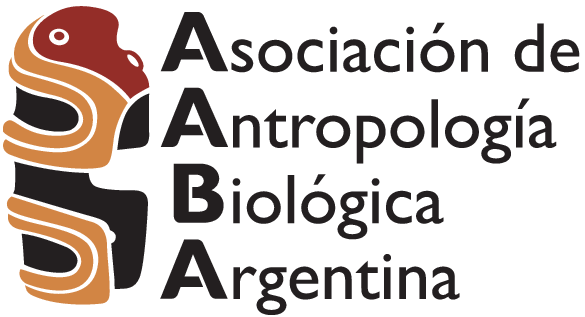Comparison of supplementation strategies for the prevention and treatment of iron deficiency anemia
DOI:
https://doi.org/10.24215/18536387e065Keywords:
preventive health, therapeutics, iron, iron deficiency anemiaAbstract
The nutrition in the first 1000 days of human life is crucial to maintain the proper growth and development. In children one of the main malnutrition problems is iron deficiency. The Argentine Society of Pediatrics recommends daily doses with ferrous sulfate for preventive supplementation and also for therapeutic treatment, but in higher doses. Due to the adverse effects and the poor treatment compliance, the frequency of anemia iron deficiency continues to be very high which is why weekly supplementation emerges as an alternative. One of the invisible consequences associated with daily administration is that it can break the cellular balance and cause oxidative stress, causing damage to the main cellular biomolecules. The objective of this paper was to review the effectiveness of various forms of administration of preventive supplementation and therapeutic treatment for iron deficiency anemia. Likewise, studies where the effects of iron on oxidative stress and/or damage to biomolecules are evaluated. An exhaustive bibliographic search was carried out through different databases available online (Pubmed, Google Scholar, etc). Approximately 30 scientific articles in English and/or Spanish, carried out in vitro and in vivo, were selected. It is extremely important to review the current supplementation and treatment schemes to favor the design of adequate public health policies to deal with this universally distributed pathology.
Downloads
Metrics
References
Autoridad de Cuenca Matanza Riachuelo Buenos Aires. (2012). Resultados: informe preliminar de la Evaluación Integral de Salud en Áreas de Riesgo de Villa Inflamable, Polo Petroquímico de Dock Sud, Partido de Avellaneda, Provincia de Buenos Aires–EISAR. http://www.acumar.gob.ar/content/documents/Salud/Informes_ENUDPATEISAR/EISARV.Inflamable.pdf
Agarwal, K. N., Gomber, S., Bisht, H. y Som. M. (2003). Anemia prophylaxis in adolescent school girls by weekly or daily iron-folate supplementation. Indian Pediatr, 40(4), 296-301.
Akarsu, S., Demır, H., Selek, S. y Oguzoncul, F. (2013). Iron deficiency anemia and levels of oxidative stress induced by treatment modality. Pediatrics International, 55, 289-295. https://doi.org/10.1111/ped.12054
Aksu, B. Y., Hasbal, C., Himmetoglu, S., Dincer, Y., Koc, E. E., Hatipoglu, S. y Akcay, T. (2010). Leukocyte DNA damage in children with iron deficiency anemia: effect of iron supplementation. European journal of pediatrics, 169, 951-956. https://doi.org/10.1007/s00431-010-1147-1
Alcântara, D. D. F. A., Ribeiro, H. F., Matos, L. A., Sousa, J. M. C., Burbano, R. R. y Bahia, M. O. (2013). Cellular responses induced in vitro by iron (Fe) in a central nervous system cell line (U343MGa). Genetics and Molecular Research, 12, 1554-1560. https://doi.org/10.4238/2013.May.13.9
Aycicek, A., Koc, A., Oymak, Y., Selek, S., Kaya, C. y Guzel, B. (2014). Ferrous Sulfate (Fe2+) Had a Faster Effect Than Did Ferric Polymaltose (Fe3+) on Increased Oxidant Status in Children With Iron-deficiency Anemia. Journal of Pediatric Hematology/Oncology, 36, 57-61. https://doi.org/10.1097/MPH.0b013e318299c91a
Bergel Sanchís, M. L., Cesani, M. F. y Oyhenart, E. E. (2017). Malnutrición infantil e inseguridad alimentaria como expresión de las condiciones socio-económicas familiares en Villaguay, Argentina (2010-2012). Un enfoque biocultural. Población y Salud en Mesoamérica, 14, 60-85. https://doi.org/10.15517/psm.v14i2.27305
Comité Nacional de Hematología, Oncología y Medicina Transfusional y Comité Nacional de Nutrición. (2017). Deficiencia de hierro y anemia ferropénica. Guía para su prevención, diagnóstico y tratamiento. Archivos Argentinos de Pediatría, 115(4), s68. http://dx.doi.org/10.5546/aap.2017.s68
Cook, J. D. y Reddy, M. B. (1995). Efficacy of weekly compared with daily iron supplementation. The American Journal of Clinical Nutrition, 62(1), 117-120. https://doi.org/10.1093/ajcn/62.1.117
De-Regil, L. M., Jefferds, M. E. D., Sylvetsky, A. C. y Dowswell, T. (2011). Intermittent iron supplementation for improving nutrition and development in children under 12 years of age. Cochrane Database of Systematic Reviews, CD009085. https://doi.org/10.1002/14651858.CD009085.pub2
Desai, M. R., Dhar, R., Rosen, D. H., Kariuki, S. K., Shi, Y. P., Kager, P. A. y ter Kuile, F. O. (2004). Daily Iron Supplementation Is More Efficacious than Twice Weekly Iron Supplementation for the Treatment of Childhood Anemia in Western Kenya.The Journal of Nutrition, 134(5), 1167-1174. https://doi.org/10.1093/jn/134.5.1167
Díaz-Castro, J., García, Y., López-Aliaga, I., Alférez, M. J. M., Hijano, S., Ramos, A. y Campos, M. S. (2013). Influence of Several Sources and Amounts of Iron on DNA, Lipid and Protein Oxidative Damage During Anaemia Recovery. Biological Trace Element Research, 155, 403-410. https://doi.org/10.1007/s12011-013-9802-9
Engstrom, E. M., Castro, I. R. R., de Portela, M., Cardoso, L. O. y Monteiro, C. A. (2008). Effectiveness of daily and weekly iron supplementation in the prevention of anemia in infants. Revista de Saúde Pública, 42, 786-795. https://doi.org/10.1590/S0034-89102008005000043
Encuesta Nacional de Nutrición y Salud (2007). Documento de Resultados 2007. Ministerio de Salud. Disponible en: http://www.msal.gov.ar/htm/site/ennys/pdf/documento_resultados_2007.pdf
Fishman, S. M., Christian, P. y West, K. P. (2000). The role of vitamins in the prevention and control of anaemia. Public Health Nutrition, 3(2), 125-150. https://doi.org/10.1017/S1368980000000173
Fraga, C. G. y Oteiza, P. I. (2002). Iron toxicity and antioxidant nutrients. Toxicology, 180, 23-32. https://doi.org/10.1016/S0300-483X(02)00379-7
Franke, S. I. R., Prá, D., Silva J da, Erdtmann, B. y Henriques, J. A. P. (2005). Possible repair action of Vitamin C on DNA damage induced by methyl methanesulfonate, cyclophosphamide, FeSO4 and CuSO4 in mouse blood cells in vivo. Mutation Research/Genetic Toxicology and Environmental Mutagenesis, 583(1), 75-84. https://doi.org/10.1016/j.mrgentox.2005.03.001
Gambaro, R. C., Seoane, A. y Padula, G. (2018). Oxidative Stress and Genomic Damage Induced In Vitro in Human Peripheral Blood by Two Preventive Treatments of Iron Deficiency Anemia. Biological Trace Element Research, 190, 318-326. https://doi.org/10.1007/s12011-018-1576-7
Gambaro, R. C., Seoane, A. I. y Padula, G. (2018). Comparación del daño cromosómico provocado in vitro por dos formas de administración del tratamiento preventivo de la anemia ferropénica. Revista Argentina de Antropología Biológica, 20 (1), 1-9. https://doi.org/10.17139/raab.2018.0020.01.02
Hacıhamdioglu, D. Ö., Kurekci, A. E., Gursel, O., Atay, A. A., Balamtekin, N., Aydın, A., Haşimi, A. y Ozcan, O. (2013). Evaluation of lipid peroxidation and antioxidant system in healthy iron-replete infants receiving iron prophylaxis. Nutrition, 29, 138-142. https://doi.org/10.1016/j.nut.2012.05.009
Hawamdeh, H. M., Rawashdeh, M. y Aughsteen, A.A. (2013). Comparison Between Once Weekly, Twice Weekly, and Daily Oral Iron Therapy in Jordanian Children Suffering From Iron Deficiency Anemia. Maternal and Child Health Journal, 17, 368-373. https://doi.org/10.1007/s10995-012-0981-3
Inverso, A. (2019). Nutrición en Pediatría. Revista Cubana de Alimentación y Nutrición, 29(1), 3. https://revalnutricion.sld.cu/index.php/rcan/article/view/738
Kapil, U., Kapil, R. y Gupta, A. (2019). Prevention and Control of Anemia Amongst Children and Adolescents: Theory and Practice in India. The Indian Journal of Pediatrics, 86, 523-531. https://doi.org/10.1007/s12098-019-02932-5
Leal, M. M., Fanlo, E. R. y Suarez, M. J. (2017). Deficiencia de micronutrientes en Argentina. Universidad Maimónides, Departamento de investigación en Nutrición, Buenos Aires.
Linetzky, B., Morello, P., Virgolini, M. y Ferrante, D. (2011). Resultados de la primera encuesta nacional de salud escolar: Argentina, 2007. Archivos Argentinos de Pediatría, 109, 111-116.
Matos, T. A., Arcanjo, F. P. N., Santos, P. R. y Arcanjo, C. C. (2016). Prevention and Treatment of Anemia in Infants through Supplementation, Assessing the Effectiveness of Using Iron Once or Twice Weekly. Journal of Tropical Pediatrics, 62(2), 123-130. https://doi.org/10.1093/tropej/fmv085
Mollet, I. G., Patel, D., Govani, F. S., Giess, A., Paschalaki, K., Periyasamy, M., Lidington, E. C., Mason, J. C., Jones, M. D., Game, L., Ali, S. y Shovlin, C. L. (2016). Low Dose Iron Treatments Induce a DNA Damage Response in Human Endothelial Cells within Minutes. PLOS ONE, 11, e0147990. https://doi.org/10.1371/journal.pone.0147990
Mozaffari-Khosravi, H., Noori-Shadkam, M., Fatehi, F. y Naghiaee, Y. (2010). Once Weekly Low-dose Iron Supplementation Effectively Improved Iron Status in Adolescent Girls. Biological Trace Element Research, 135, 22-30. https://doi.org/10.1007/s12011-009-8480-0
Ninh, N. X., Berger, J., Quyen, D. T., Khan, N. C., Traissac, P. y Khoi, H. H. (2002). Efficacité de la supplémentation en fer quotidienne et hebdomadaire pour le contrôle de l’anémie chez le nourrisson en milieu rural au Vietnam. Cah. Détudes Rech. Francoph. Santé, 12, 31-7.
Nogueira Arcanjo, F. P., Santos, P. R., Costa Arcanjo, C. P., Meira Magalhães, S. M. y Madeiro Leite, Á. J. (2013). Daily and Weekly Iron Supplementations are Effective in Increasing Hemoglobin and Reducing Anemia in Infants. Journal of Tropical Pediatrics, 59, 175-179. https://doi.org/10.1093/tropej/fms071
Organización Mundial de la Salud. (2001). Iron deficiency anaemia: assessment, prevention and control. https://www.who.int/publications/m/item/iron-children-6to23--archivediron-deficiency-anaemia-assessment-prevention-and-control.
Organización Mundial de la Salud. (2016). ¿Qué es la malnutrición? http://www.who.int/features/qa/malnutrition/es/
Padula, G. (2008). Malnutrición infantil. Evaluación antropométrica y consecuencias cromosómicas. Ediciones al Margen.
Pena-Rosas, J. P., Nesheim, M. C., Garcia-Casal, M. N., Crompton, D. W. T., Sanjur, D., Viteri, F. E., Frongillo, E. A. y Lorenzana, P. (2004). Intermittent Iron Supplementation Regimens Are Able to Maintain Safe Maternal Hemoglobin Concentrations during Pregnancy in Venezuela. The Journal of Nutrition, 134, 1099-1104. https://doi.org/10.1093/jn/134.5.1099
Peña‐Rosas, J. P., De‐Regil, L. M., Malave, H. G., Flores‐Urrutia, M. C. y Dowswell, T. (2015). Intermittent oral iron supplementation during pregnancy. Cochrane Database of Systematic Reviews, (10). https://doi.org/10.1002/14651858.CD009997.pub2
Prá, D., Bortoluzzi, A., Müller, L. L., Hermes, L., Horta, J. A., Maluf, S. W., Henriques, J. A. P., Fenech, M. y Franke, S. I. R. (2011). Iron intake, red cell indicators of iron status, and DNA damage in young subjects. Nutrition, 27(3), 293-297. https://doi.org/10.1016/j.nut.2010.02.001
Prá, D., Franke, S. I. R., Giulian, R., Yoneama, M. L., Dias, J. F., Erdtmann, B. y Henriques, J. A. P. (2008). Genotoxicity and mutagenicity of iron and copper in mice. BioMetals, 21, 289-297. https://doi.org/10.1007/s10534-007-9118-3
Premkumar, K. y Bowlus, C. L. (2003). Ascorbic acid reduces the frequency of iron induced micronuclei in bone marrow cells of mice. Mutation Research/Genetic Toxicology and Environmental Mutagenesis, 542(1–2), 99-103. https://doi.org/10.1016/j.mrgentox.2003.09.002
Schultink, W., Gross, R., Gliwitzki, M., Karyadi, D. y Matulessi, P. (1995). Effect of daily vs twice weekly iron supplementation in Indonesian preschool children with low iron status. The American Journal of Clinical Nutrition, 61(1), 111-115. https://doi.org/10.1093/ajcn/61.1.111
Stevens, G. A., Paciorek, C. J., Flores-Urrutia, M. C., Borghi, E., Namaste, S., Wirth, J. P., Suchdev, P. S., Ezzati, M., Rohner, F., Flaxman, S. R., Rogers y L. M. (2022). National, regional, and global estimates of anaemia by severity in women and children for 2000-19: a pooled analysis of population-representative data. The Lancet Global Health, 10, e627-e639. https://doi.org/10.1016/S2214-109X(22)00084-5
Stratton, M. R., Campbell, P. J. y Futreal, P. A. (2009). The cancer genome. Nature, 458, 719-724. https://doi.org/10.1038/nature07943
Sundaram, R. C., Selvaraj, N., Vijayan, G., Bobby, Z., Hamide, A. y Rattina Dasse N. (2007). Increased plasma malondialdehyde and fructosamine in iron deficiency anemia: Effect of treatment. Biomedicine & Pharmacotherapy, 61(10), 682-685. https://doi.org/10.1016/j.biopha.2007.06.013
Tee, E. S., Kandiah, M., Awin, N., Chong, S. M., Satgunasingam, N., Kamarudin, L., Milani, S., Dugdale, A. E. y Viteri, F. E. (1999). School-administered weekly iron-folate supplements improve hemoglobin and ferritin concentrations in Malaysian adolescent girls. The American Journal of Clinical Nutrition, 69(6), 1249-1256. https://doi.org/10.1093/ajcn/69.6.1249
Viteri, F. E., Ali, F. y Tujague, J. (1999). Long-term weekly iron supplementation improves and sustains nonpregnant women’s iron status as well or better than currently recommended short-term daily supplementation. The Journal of Nutrition, 129, 2013-2020. https://doi.org/10.1093/jn/129.11.2013.
Yurdakök, K., Temiz, F., Yalçin, S. S. y Gümrük, F. (2004). Efficacy of daily and weekly iron supplementation on iron status in exclusively breast-fed infants. Journal of Pediatric Hematology/Oncology 26(5), 284-288. https://doi.org/10.1097/00043426-200405000-00005
Zaka-Ur-Rab, Z., Adnan, M., Ahmad, S. M. y Islam, N. (2016). Effect of Oral Iron on Markers of Oxidative Stress and Antioxidant Status in Children with Iron Deficiency Anaemia. Journal of Clinical and Diagnostic Research, 10 (10), SC13-SC19. https://doi.org/10.7860/JCDR/2016/23601.8761
Zalles Cueto, L., Rojas Meneces, J., Rojas Soto, S. y Sejas, E. (2005). Eficacia de la suplementación semanal versus diaria con sulfato ferroso en niños escolares con anemia ferropenica. Gaceta Médica Boliviana, 28, 3-8.
Downloads
Published
How to Cite
Issue
Section
License
Copyright (c) 2023 Rocío Celeste Gambaro, Analía Seoane, Gisel PadulaThe RAAB is a diamond-type open access journal. There are no charges for reading, sending or processing the work. Likewise, authors maintain copyright on their works as well as publication rights without restrictions.



























